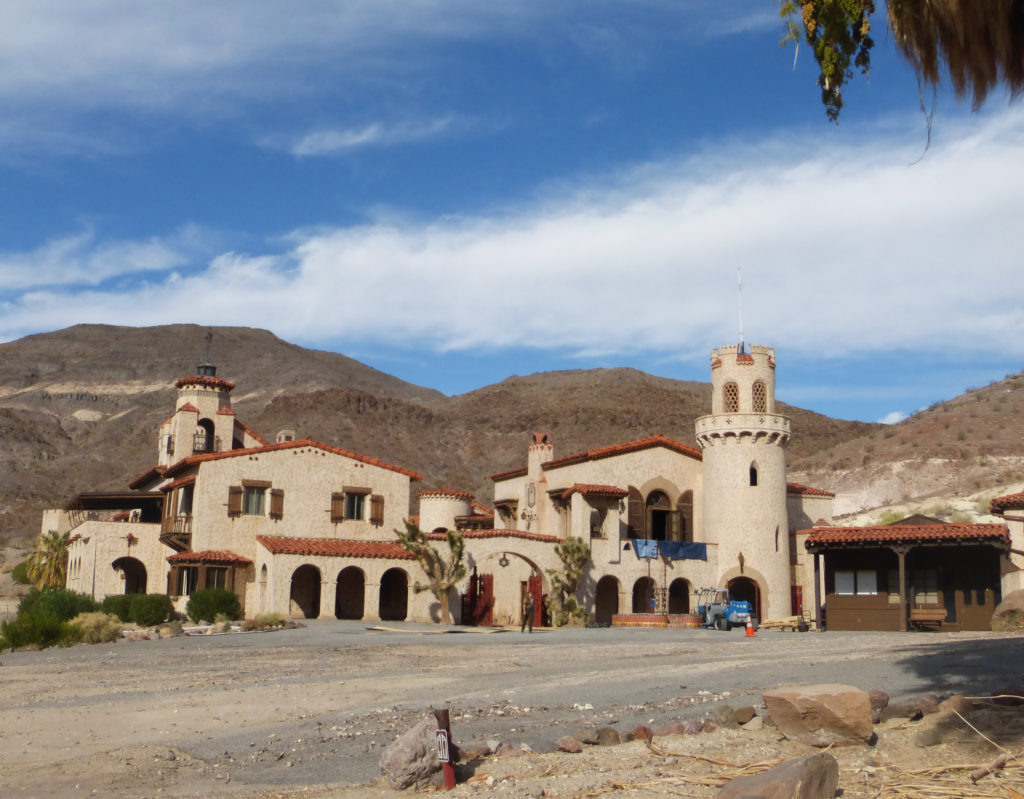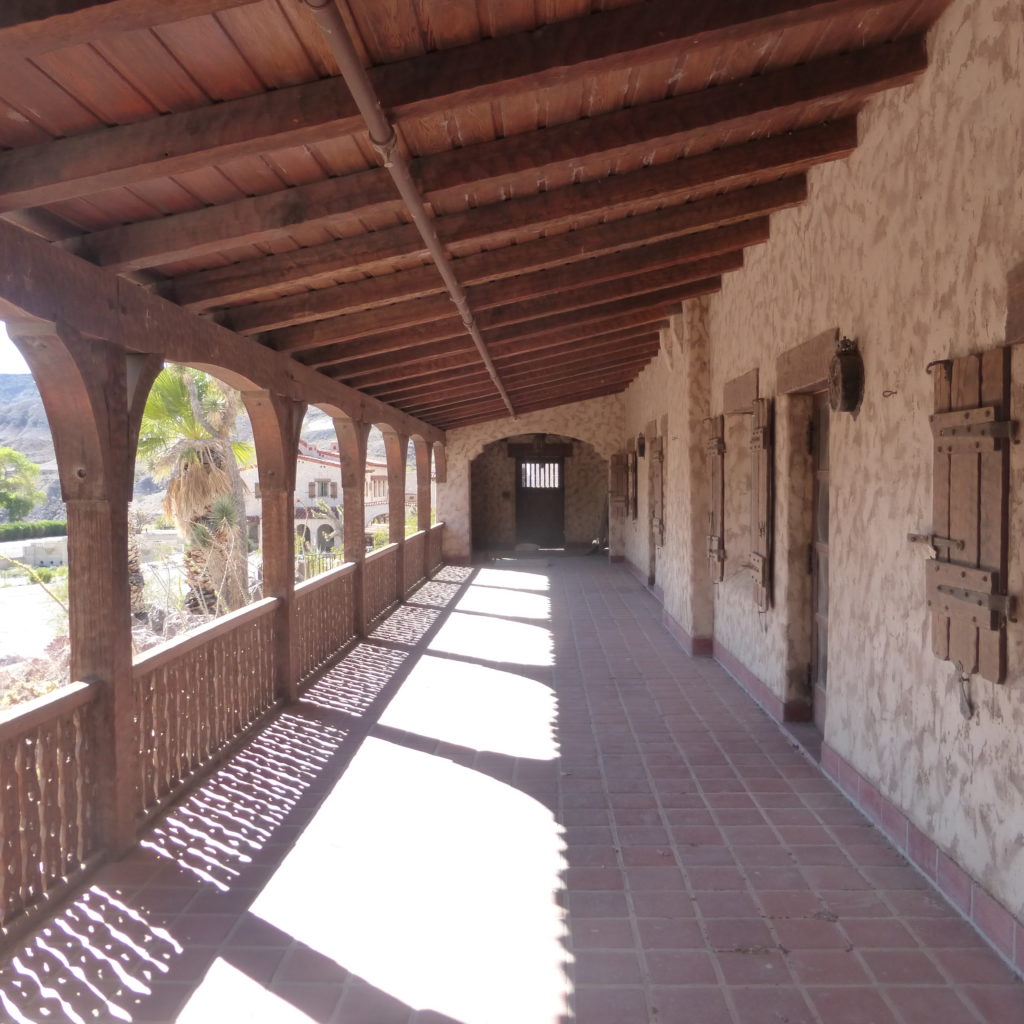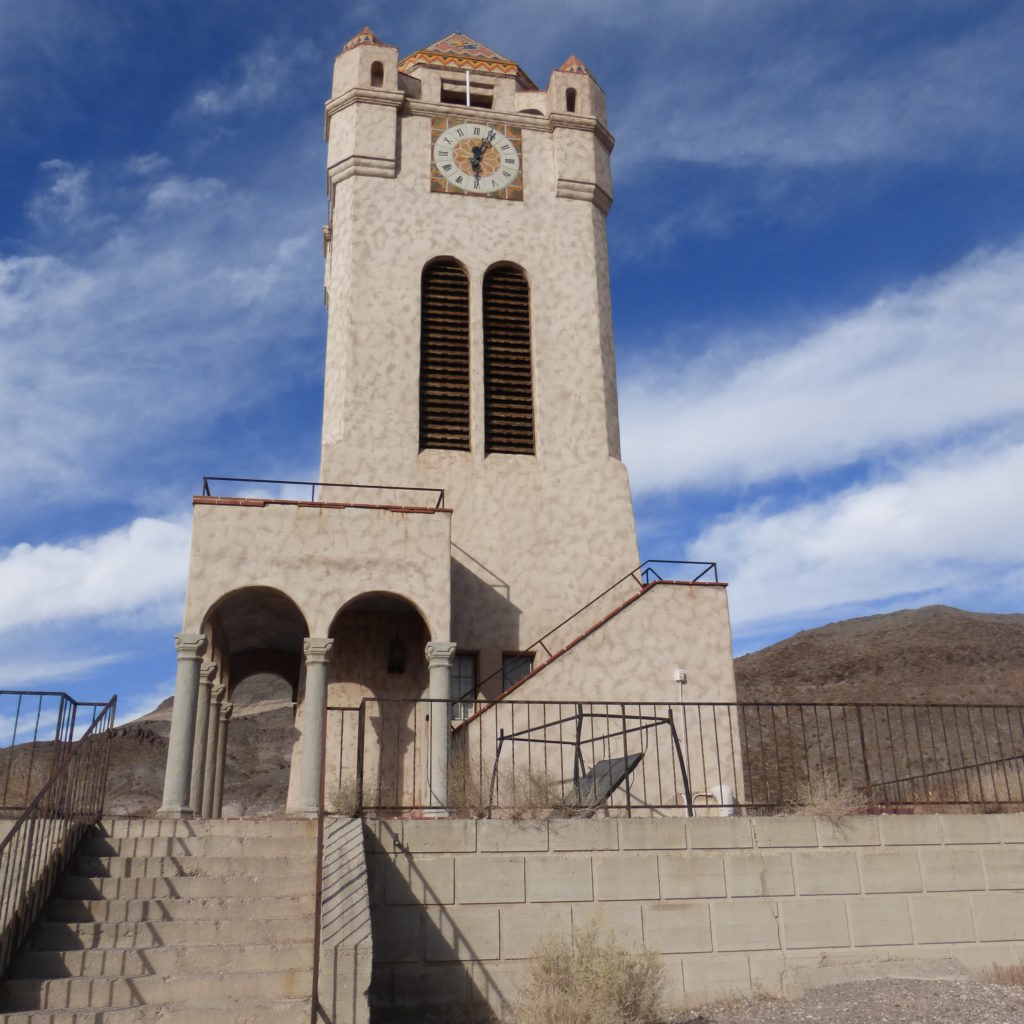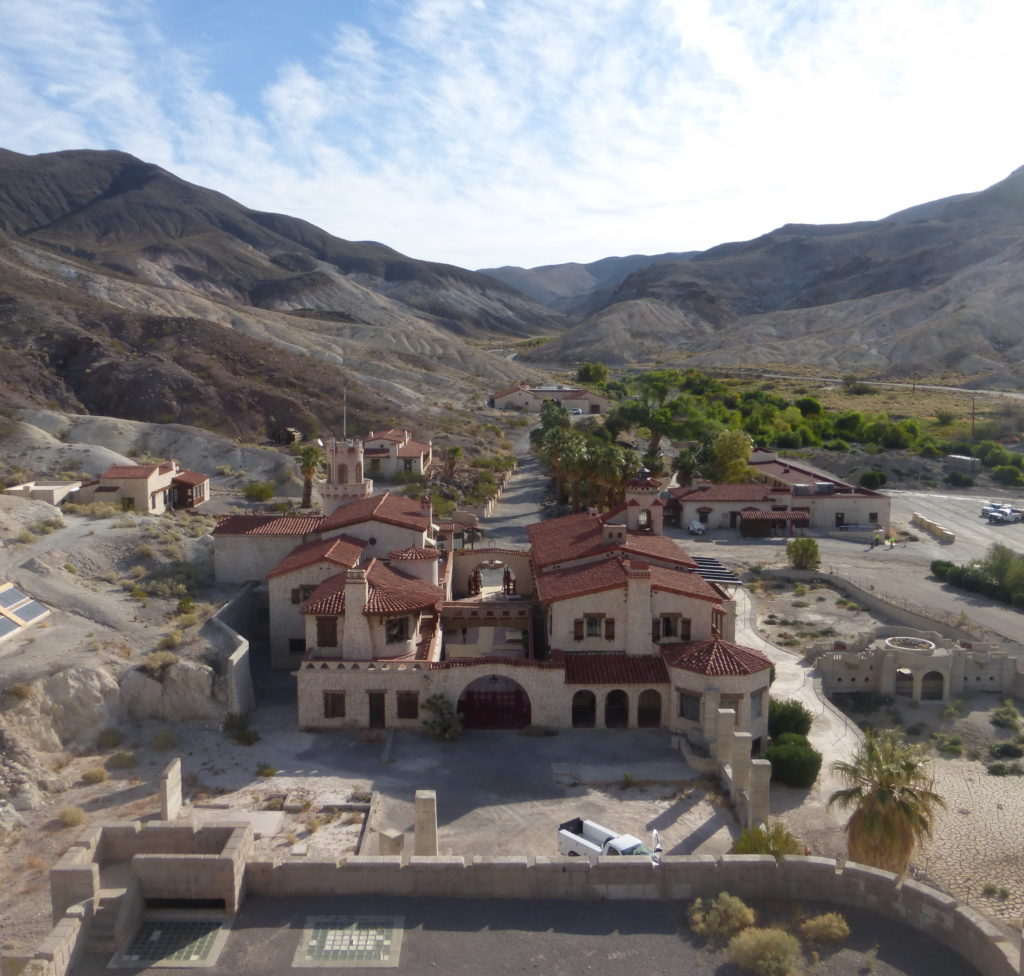
PRESERVATION IN DEATH VALLEY: HISTORIC AND MODERN
Death Valley has the most extreme climate in the United States. Temperatures in the summer can soar up to 120⁰ Fahrenheit. That poses additional challenges for preservationists and their contractors. The blistering sun and harsh conditions can corrode materials, and flash flooding can endanger historic resources, especially as climate chaos leads to increasingly extreme weather. This two-part blog takes a look at the challenges and opportunities we’ve found working in Death Valley National Park, including Scotty’s Castle, a complex that dates back to the 1920s, and a more recent historic project, the midcentury modern Furnace Creek Visitor Center.
Part One: Preserving Historic Buildings in the Desert
In Death Valley’s Grapevine Canyon stands a peculiar monument to a peculiar man: Scotty’s Castle. In the early 1900s, Chicago insurance magnate Albert Johnson traveled to the desert for his health. There he met the charismatic Walter Scott, a prospector looking for investors in his secret gold mine. Johnson soon figured out that “Scotty” was a con man and the gold mine was illusory—but the two men struck up a lasting friendship anyway.

Scotty’s Castle & Annex
In love with the hot, dry climate, Johnson purchased the Grapevine site and hired a Hungarian architect, Martin de Dubovay, to design a complex of buildings that eventually would include the main “castle” building, an annex, a hacienda, a clock tower, and several other structures, including a bungalow for his pal Scotty to live in. The architectural style reflects Johnson’s taste for unadorned architecture—as modified by his wife Bessie’s love for Mission Revival. The building materials had to be hauled to the isolated site at great cost. Scotty, ever the tale-teller, claimed himself as the owner. Johnson, apparently amused, went along with it—he referred to himself as “Scotty’s banker.”
Now part of Death Valley National Park, the castle is a popular tourist destination. Or at least it was until several weeks of heavy rainfall resulted in a massive flood in the fall of 2015, causing the National Park Service to close the facility until further notice. In two days alone, four inches of rain fell—as much as the complex usually receives in an entire year. A wall of water came down the canyon, heading straight towards the castle. Luckily it turned left before swamping the main building. Mud and debris piled up as high as four feet, blocking roads and damaging buildings. Photos taken afterward show nearly two feet of mud in the visitor center’s interior. The long shed garage building that houses the existing visitor center will be repaired as part of a future project and then adapted into a new visitor arrival orientation center.
We have two concurrent projects underway at Scotty’s Castle: addressing small to medium-sized issues, such as repairing the bridge between the main castle and the annex, fixing leaks, and otherwise addressing damage, as well as rehabilitating the small building known as the Fire Cache.
Scotty’s Castle is a mixture of concrete construction and wood frame construction, with a plaster-covered exterior and a clay tile roof. The annex has a concrete first floor and a wood-framed second story and gabled roof. The building features a number of terraces and patios, which were built with tile over the concrete but no membrane—so when rain falls, the building leaks. We may have to take up all the tile, put down a membrane, and replace the tile.

Hacienda at Scotty’s Castle
One thing we’ve noticed here and in our other Death Valley projects is that no matter how much water leakage there is, the ground dries out so fast that the wood doesn’t have a chance to rot. Plus, the climate is inhospitable to termites.
But exposed wood takes a beating in the hot, constant sun. We’re identifying doors that need protection with special coatings because they aren’t shaded by overhangs. Plaster seems to do well in the desert—we see fewer cracks here than in wetter climates. The architect made good choices in his use of materials.
After a flood or an earthquake, you always have to consider how to replace or repair buildings in such a way that they’re protected from future disasters, yet without damaging their historic integrity. As part of a larger project to rebuild a section of the main highway, an engineering team is studying how water comes down through the upper canyon. But there still needs to be thinking about water diversion for Scotty’s Castle itself. One possible solution would be to strategically place seat walls within the landscape and the courtyard so they can not only provide a place to sit for visitors but also divert incoming water during a flood.

Chimes Tower
Another challenge, of course, is getting great contractors out to such a remote location. The contractors for Death Valley tend to come from either Las Vegas or Pahrump, Nevada. When the economy is booming, contractors are busy with other work and less willing to travel long distances for work. Contractors are often busiest from April to September, with a down period from November to March, so that winter period is often the best time for work in Death Valley. And you don’t want to be trying to work in July in the desert anyway. The hours of working are different here than elsewhere, too. Start work at 5:00 in the morning and finish well before noon.
Death Valley is not an easy place to work, but it is fascinating. It has drawn millionaires and scalawags alike, as well as plenty of tourists. To preserve its built environment as the climate changes and time takes its toll requires ingenuity and patience. The improbable story of the Johnsons and Walter Scott is just another of the valley’s unlikely wonders, worth saving for future generations to ponder.

